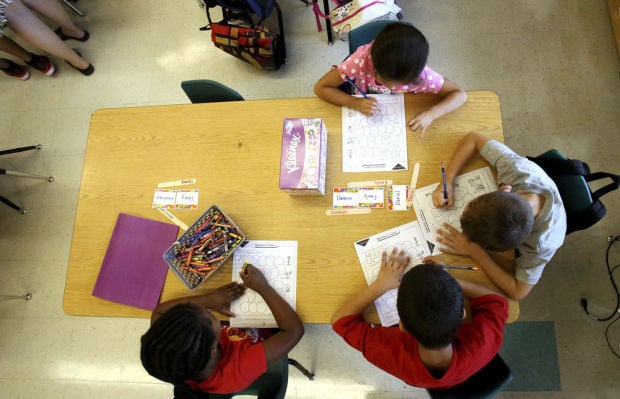PHOENIX — An attorney for the state says a judge she has no legal right to tell the Legislature it isn’t providing enough money for school construction and repair.
In new court filings, Brett Johnson acknowledged that the Arizona Supreme Court ruled more than than two decades ago that the state has an obligation to ensure that schools meet minimum adequacy standards for everything from building safety to equipment needs. The justices said at the time that it was unconstitutional to put that burden solely on local taxpayers, as it created gross disparities and left children in some schools without adequate education opportunities.
But Johnson told Maricopa County Superior Court Judge Connie Contes that she is powerless to rule on a claim by school districts that the amount of money being provided by the state is inadequate.
“The question of how much should be appropriated for any particular item in a given year is clearly committed by our Constitution to those acting in a legislative capacity,” he said.
That theme was echoed in filings by attorney Bill Richards, who separately represents House Speaker J.D. Mesnard and Senate President Steve Yarbrough.
Richards told Contes that what the school districts want would “improperly intrude on matters preserved to the discretion of the legislative branch.” He said it would put the judge in the position of deciding what he called “political questions regarding the degree and nature of funding provided for or related to public school capital facilities.”
But Mary O’Grady, who represents the school districts that sued earlier this year, said it is clearly within the power of courts to determine if lawmakers are meeting their constitutional obligations to provide “adequate” facilities for public education.
Judges are also empowered to tell them to fix it, O’Grady said. At that point it would be up to legislators to determine how, though that decision could lead to further litigation if challengers remain dissatisfied.
But the case is clearly about money.
Tim Hogan, another attorney representing challengers, says lawmakers are shorting schools each year for the capital funds they need to the tune of about $300 million. And he said the cumulative loss to schools from the failure to properly fund capital needs is now close to $2 billion.
The lawsuit traces back to 1994.
Prior to then, construction of new schools and needed repairs were presumed to be solely the responsibility of local districts. But in a historic ruling that year, the high court said that created gross inequities — and left some schools and students without adequate facilities.
“Some districts have schoolhouses that are unsafe, unhealthy, and in violation of building, fire and safety codes,” the justices said, noting schools without libraries, laboratories or gymnasiums. “But in other districts, there are schools with indoor swimming pools, a domed stadium, science laboratories, television studios, well-stocked libraries, satellite dishes and extensive computer systems.”
All that, they said, runs afoul of a state constitutional obligation to maintain a “general and uniform” school system.
After several more rulings, lawmakers eventually created the School Facilities Board to come up with minimum guidelines and created a system to both finance new schools as needed as well as provide $200 million a year for upkeep.
The only thing is, lawmakers have not fully funded that formula for years.
The result, according to challengers, has been a shortage of funds to pay not only for repairs but for other needs ranging from school buses to textbooks. And that forces the districts to use locally raised funds — assuming voters are willing to go along — to pay for needs the Supreme Court concluded are the state’s responsibility.
O’Grady said Johnson’s claim that Contes cannot hear the challenge is based on a flawed reading of the lawsuit.
She said what the Supreme Court ruled in 1994 was that the state has to have standards for what constitutes adequate classrooms.
“And you’ve got to have funding to meet the standards,” she said.
O’Grady is seeking a ruling that the money being provided does not satisfy the constitutional — and court-ordered — requirement to meet those standards and ensure educational opportunities.
That issue, she said, is “absolutely within the reach of the courts.”
And O’Grady said if Contes agrees with challengers that the funding is inadequate, “then it kicks back to the Legislature for a remedy,” meaning the courts are not infringing on legislative prerogatives — assuming whatever they decide makes the funding scheme constitutional.
Questions of the power of judges aside, Johnson also contends that the districts themselves have no right to be in court in the first place.
He said only those who have suffered a “particularized” injury to themselves have a right to assert any claim that the money they are getting is constitutionally inadequate.
Instead, Johnson said, the lawsuit contends the overall amount of dollars available to fund new buildings statewide and maintain the ones that already exist is inadequate.
And Johnson said there is no evidence that the districts that filed suit had actually asked for cash from the School Facilities Board, which evaluates needs and distributes money. He said only if they are first turned down might they have a legal claim.
O’Grady brushed those claims aside.
“Our issues are not about funding for particular projects,” she said. She agreed that such a request would go to the board.
“Our lawsuit is about the structure of the system overall and whether the structure of the system overall satisfies constitutional requirements,” O’Grady continued. “This isn’t about one district needing money for a specific project.”
Contes is set to hear arguments in December.





